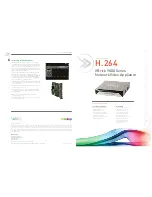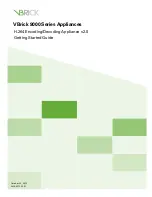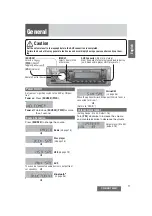
Technical Manual
Absolute Single/Multiturn Encoders
Profibus
R.000.000
4-6 of 22
4
4
Cable
shielding
Cable shielding
EN
50
170
leaves
it
up
to
the
user
to
decide,
whether
to
use
shielded
or
unshielded
cable.
Unshielded
cable
is
allowed
in
interference
‐
free
environments.
However,
the
following
points
argue
for
systematic
use
of
shielded
cable:
a)
An
area
free
from
interference
exists
at
best
inside
shielded
cabinets.
But
as
soon
as
this
contains
other
electronic
devices
such
as
relays
and
contactors,
then
this
is
no
longer
guaranteed.
b)
The
use
of
unshielded
cables
requires
additional
protective
measures
against
overvoltage
at
the
bus
signal
inputs.
This
is
why
we
recommend
on
principle
the
use
of
shielded
cables
for
the
bus
lines.
This
recommendation
extends
also
to
the
possible
use
of
power
‐
supply
cables
coming
from
external
power
sources
to
the
PROFIBUS
devices,
e.g.
for
repeaters.
Double
‐
shielded
cables
are
particularly
suitable
for
environments
with
strong
EMC
interference.
In
this
case,
in
order
to
ensure
optimal
protection,
the
whole
surface
of
the
external
shielding
(braided
shield)
and
the
inner
shielding
(foil
shield)
must
be
connected
at
both
cable
ends
to
the
protective
earth
by
means
of
an
earth
clip.
Shielding
rules
When
using
a
shielded
bus
cable,
it
is
recommended
to
connect
the
shield
at
both
ends
to
the
protective
earth
using
low
‐
induction
connections.
This
ensures
the
highest
possible
electromagnetic
compatibility
(EMC).
One
exception
concerns
separated
potentials
(e.g.
in
refineries):
generally,
in
these
plants,
earthing
is
permitted
at
one
end
only.
The
connection
between
the
cable
shielding
and
the
protective
earth
is
best
done
using
the
metallic
device
housing
and
the
screw
terminal
of
the
plug
connector.
Here
it
should
be
noted
that
discharge
via
the
pin
does
not
represent
an
optimal
solution.
To
achieve
the
best
EMC,
it
is
better
to
expose
the
cable
shielding
at
a
suitable
location
and
to
connect
it
to
the
protective
earth
(e.g.
the
metallic
cabinet
frame)
using
a
low
‐
induction
cable
link
that
should
be
kept
as
short
as
possible.
This
can
be
done
for
example
with
a
shielding
clip
before
the
bus
plug.
Cable
specification:
A
‐
type
cable
for
PROFIBUS
–
DP
Surge
impedance:
135
to
165
Ohm,
for
a
measurement
frequency
of
3
to
20
MHz.
Cable
capacitance:
<
30
pF
per
metre
Conductor
section:
> 0.34
mm²,
corresponds
to
AWG
22
Cable
type:
twisted
pair,
1
x
2
or
2
x
2
or
1
x
4
conductors
Loop
resistance:
<
110
Ohm
per
km
Signal
damping:
max.
9
dB
over
the
whole
length
of
the
cable
section
Shielding:
Copper
braid
shielding
or
braid
shielding
and
foil
shielding







































